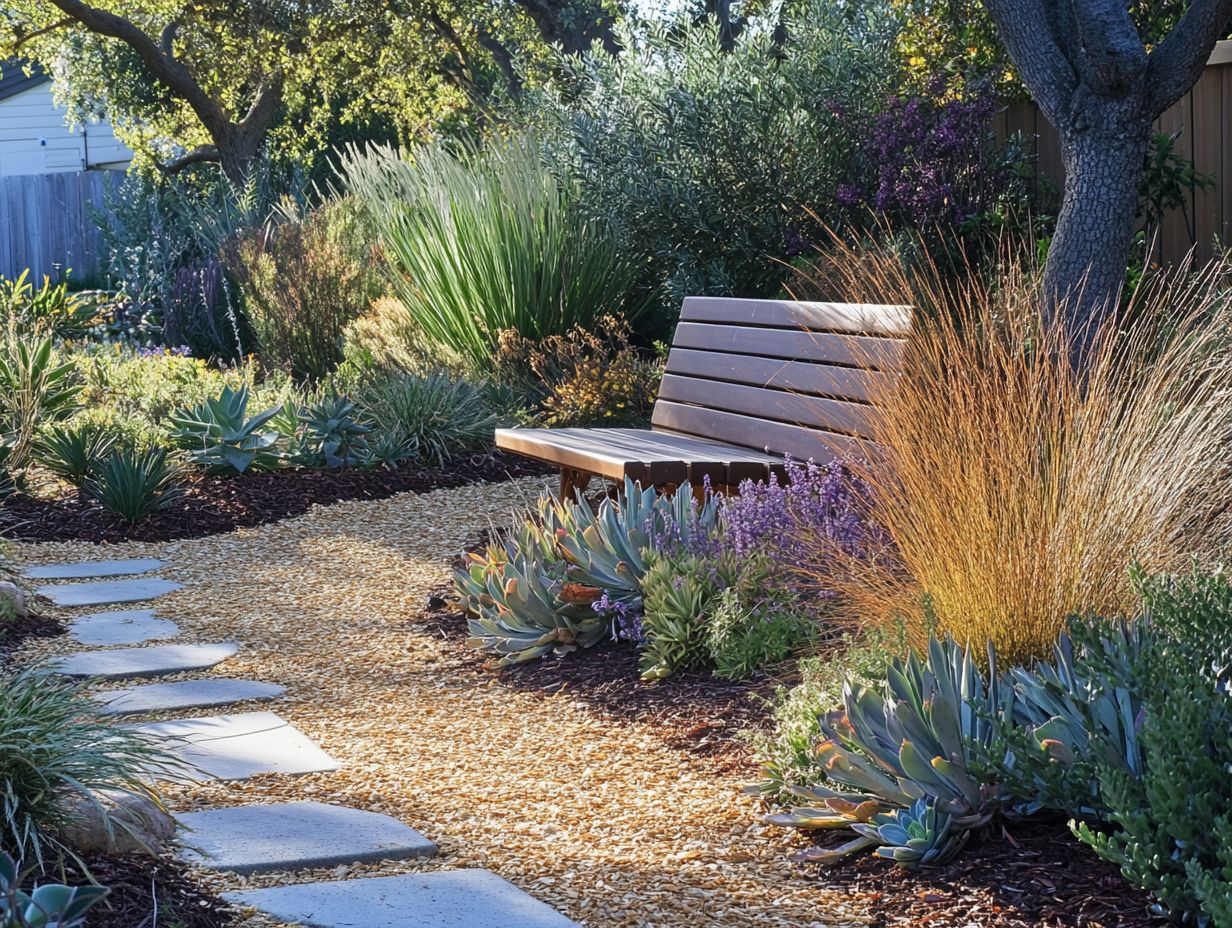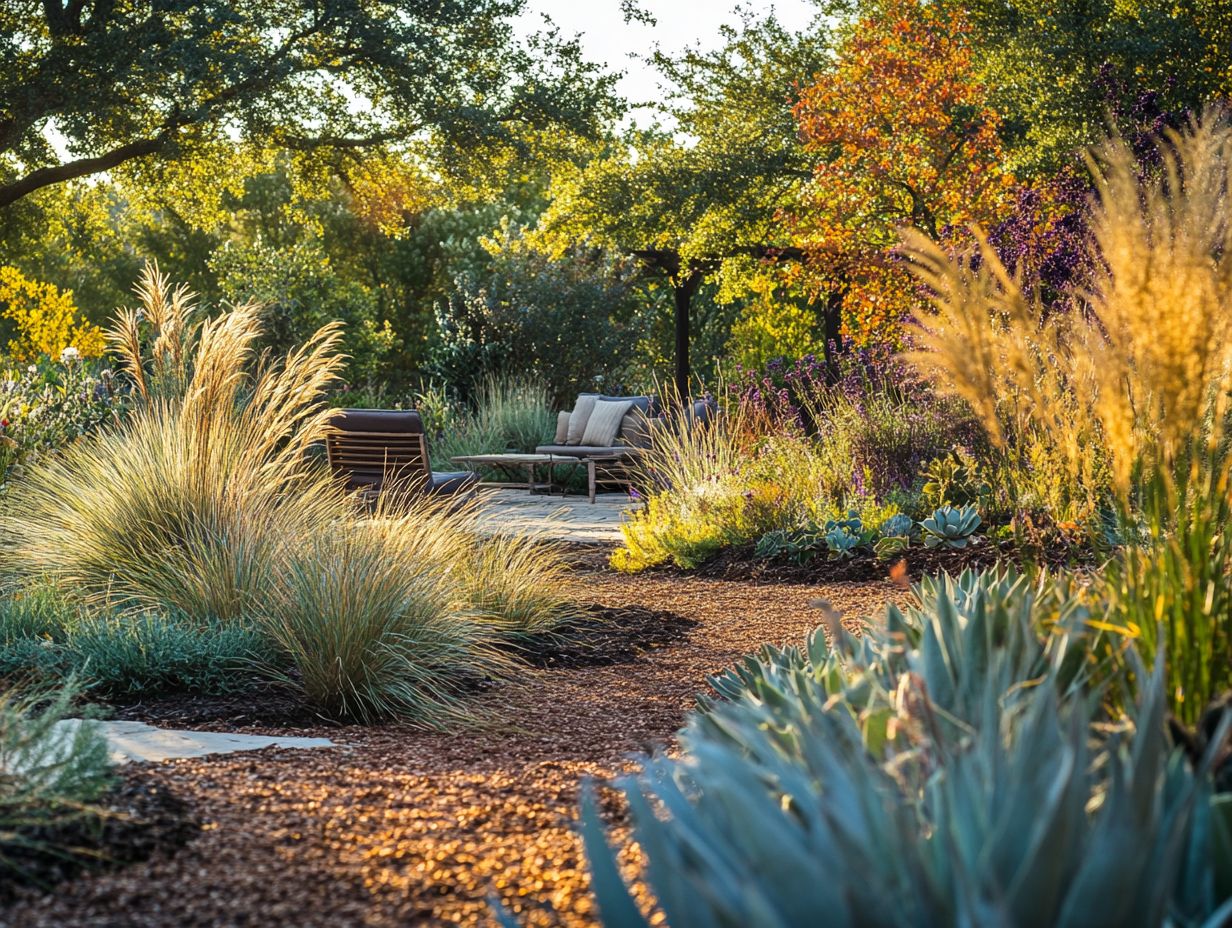Many homeowners struggle to find the time for gardening while managing work commitments and family responsibilities. We have put together our rundown on Gardening Tips for Busy Homeowners.
Low-maintenance gardening presents a practical solution, enabling individuals to enjoy a beautiful outdoor space without the need for constant upkeep.
This article delves into the various benefits of low-maintenance gardening, including how to select the right plants, implement smart landscaping techniques, and establish efficient watering systems, along with time-saving maintenance tips.
Additionally, it explores how technology can simplify gardening tasks, making it easier than ever to manage your outdoor oasis.
Join in to discover how you can transform your garden into a stress-free sanctuary!
Benefits of Low-Maintenance Gardening
Low-maintenance gardening provides numerous advantages, especially for busy homeowners who find themselves balancing multiple responsibilities and may not have the time for extensive garden upkeep.
By adopting time-saving strategies like selecting the appropriate plants and using efficient watering systems you can create a beautiful outdoor living space without the burden of traditional gardening’s demands. This method not only improves the visual appeal of your home but also supports a sustainable lifestyle, transforming gardening into a pleasurable activity rather than a tedious chore.
Why It’s Important for Busy Homeowners
For busy homeowners, adopting low-maintenance gardening practices is crucial for balancing a hectic lifestyle while still appreciating the beauty of a garden. By utilizing time-saving tips such as selecting easy-care plants and implementing gardening methods that require minimal effort, homeowners can create a vibrant outdoor space that seamlessly fits into their schedules.
Low-maintenance gardening allows individuals to enjoy their outdoor areas without the constant concern of upkeep. Container gardening often emerges as a favored solution, offering flexibility and portability that makes care and organization straightforward.
Raised beds present another practical option, enhancing soil drainage and reducing the risk of weeds, while also making the gardening process more accessible, particularly for those with limited mobility.
Focusing on drought-resistant plants not only conserves water but also ensures resilience during dry spells, making gardening an even more manageable task. By embracing these strategies, homeowners can effectively manage their time while cultivating a thriving space that requires minimal intervention.
Designing a Low-Maintenance Garden
Designing a low-maintenance garden involves careful planning and thoughtful selection of plants, ensuring that your outdoor space remains both beautiful and manageable.
By integrating effective landscaping concepts and optimizing the garden layout, you can cultivate an area that flourishes with minimal effort. This approach allows you to enjoy your garden while avoiding the stress of constant maintenance.
Choosing the Right Plants
The key to establishing a successful low-maintenance garden is selecting the right plants that require minimal care, yet still contribute beauty and functionality. By choosing easy-care plants, such as drought-resistant varieties and native species, you not only save valuable time but also improve the overall health of your garden ecosystem.
When gardeners opt for native and perennial plants, they create a sustainable environment that needs less irrigation and diminishes the dependence on chemical fertilizers. These resilient plants thrive in their natural habitats, promoting better soil health with their deeper root systems, which help prevent erosion and retain moisture. Furthermore, native plants play a vital role in attracting pollinators like bees and butterflies, thereby enhancing biodiversity.
By recognizing the importance of these elements, gardeners can cultivate a more vibrant space that supports local wildlife while requiring less upkeep, ultimately making the gardening experience more enjoyable.
Utilizing Smart Landscaping Techniques
Utilizing effective landscaping techniques can significantly lessen the workload associated with garden maintenance, enabling homeowners to truly enjoy their outdoor spaces. By implementing strategies such as planting ground cover to suppress weeds and designing efficient watering systems, one can ensure that the garden thrives with minimal intervention.
Incorporating raised beds and container gardening not only optimizes space but also simplifies access for planting and harvesting. These elevated structures promote better drainage and enhance soil quality, which in turn reduces the need for frequent maintenance.
A thoughtfully planned garden layout adheres to the principles of companion planting, a practice that can naturally deter pests and encourage healthy growth. When combined with self-watering systems or automatic irrigation technologies, this approach ensures that plants receive a consistent amount of moisture. This minimizes the time spent on watering while boosting overall productivity.
Ultimately, this method conserves water and supports sustainable gardening practices that can flourish even with limited effort.
Efficient Watering and Irrigation Methods
Efficient watering and irrigation methods are essential for maintaining a low-maintenance garden, enabling busy homeowners to conserve water while ensuring their plants continue to thrive.
By incorporating automatic irrigation systems and adopting smart watering practices, you can save both time and effort, all while contributing to sustainable gardening initiatives.
Conserving Water and Time
Conserving both water and time in the garden is crucial for busy homeowners seeking a productive space with minimal maintenance. By adopting efficient techniques and time-saving tips, one can cultivate a thriving garden that flourishes even under challenging conditions.
Implementing strategies like planting drought-resistant varieties not only reduces water consumption but also promotes a vibrant ecosystem. Moreover, utilizing efficient irrigation methods, such as drip irrigation systems, ensures that water is delivered directly to the plants roots, minimizing evaporation and runoff.
Engaging in smart gardening practices, including companion planting, can effectively deter pests and enhance overall productivity, thereby reducing the reliance on chemical interventions. By adopting these strategies, homeowners can enjoy a lush and resilient garden that demands less upkeep while successfully navigating common gardening challenges.
Time-Saving Maintenance Tips
Implementing effective time-saving maintenance tips can greatly improve gardening efficiency and reduce the workload involved in garden upkeep.
By adopting straightforward gardening hacks and organic techniques, one can ensure that their garden stays vibrant with minimal effort.
Strategies for Reducing Weeds and Pests
Reducing weeds and pests is essential for maintaining a low-maintenance garden, allowing homeowners to enjoy their outdoor spaces without the constant struggle. By utilizing organic gardening methods and thoughtful garden planning, you can significantly lighten your gardening workload with time-saving hacks for busy homeowners.
Incorporating ground cover plants serves a dual purpose; it not only suppresses weeds but also enhances the aesthetic value of the garden landscape. These hardy plants act as a natural barrier, blocking sunlight from reaching weed seeds and inhibiting their growth.
Using natural fertilizers, such as compost or fish emulsion, fosters healthy plant growth while effectively keeping harmful pests at bay.
Companion planting is another effective strategy. By pairing plants that deter pests with those that attract beneficial insects, gardeners can cultivate a balanced ecosystem that supports overall health.
Additionally, conducting regular garden inspections is crucial. This practice allows for the early detection of potential issues, ensuring that sustainable gardening practices are maintained and enhancing the overall vitality of your garden.
Maximizing the Use of Mulch
Maximizing the use of mulch in your garden not only enhances its appearance but also plays a vital role in maintaining soil health and reducing maintenance efforts. This effective gardening technique helps retain moisture, suppress weeds, and improve the overall efficiency of your watering practices.
There are various types of mulch, including organic materials like wood chips, straw, and compost, each offering unique benefits that enrich the soil as they decompose. For example, wood chips can gradually improve soil structure, while straw serves as a lightweight option that promotes air circulation.
Additionally, mulch acts as insulation for plant roots, protecting them from extreme temperatures. It reduces evaporation, making your watering efforts more effective, and adds an attractive finish to your garden beds. By thoughtfully implementing mulching techniques, gardeners can create a harmonious balance of beauty and practicality in their outdoor spaces.
Incorporating Technology into Your Garden
Incorporating technology into your gardening routine can greatly streamline various tasks, making low-maintenance gardening more accessible for busy homeowners.
By utilizing gardening apps and innovative time-saving tools, you can enhance your gardening experience and maximize your productivity in the process.
Tools and Apps for Streamlining Gardening Tasks
Utilizing the right gardening tools and mobile applications can significantly streamline gardening tasks, making it easier for busy homeowners to maintain their outdoor spaces with minimal effort. From straightforward hand tools to advanced gardening apps, these resources help individuals stay organized and efficient in their gardening efforts.
Gardening apps, in particular, provide personalized plant care tips, track growth patterns, and even send reminders for watering or fertilizing, ensuring that no essential task is overlooked.
Participating in gardening classes and connecting with local gardening communities can offer a wealth of knowledge and support. This allows individuals to exchange ideas, tips, and best practices.
Such collaborative efforts not only enhance the gardening experience but also foster a sense of belonging among enthusiasts. By equipping them with various techniques, they can improve the health and beauty of their gardens.
Incorporating these combined resources can truly transform the gardening journey into a rewarding and enjoyable pursuit.
Frequently Asked Questions
1. What are some low-maintenance gardening tips for busy homeowners?
Some low-maintenance gardening tips for busy homeowners include choosing plants that require minimal care, using mulch to reduce weeds and retain moisture, and grouping plants with similar watering needs together.
2. How can I save time while watering my garden?
Invest in a drip irrigation system or install a timer on your sprinkler to automate watering and save time. You can also use a soaker hose or watering wand to water plants more efficiently.
3. What types of plants are best for a low-maintenance garden?
Plants such as succulents, ornamental grasses, and native plants are great choices for a low-maintenance garden. These plants require minimal watering and pruning, and are typically more resistant to pests and diseases.
4. Should I use chemical fertilizers in my low-maintenance garden?
To save time and reduce the need for frequent fertilizing, it is best to use organic fertilizers in a low-maintenance garden. These fertilizers release nutrients slowly, providing a steady supply to your plants without the need for frequent applications.
5. How can I reduce the amount of weeding I need to do in my garden?
Using mulch and planting ground cover plants can help reduce the amount of weeding needed in a garden. You can also use a pre-emergent herbicide to prevent weed seeds from germinating.
6. Can I still have a beautiful garden with minimal maintenance?
Absolutely! By choosing the right plants, using efficient watering methods, and implementing time-saving strategies, you can have a gorgeous garden without spending hours on maintenance. With a little planning and effort, a low-maintenance garden can still be a stunning and inviting space.










